Technology
5 secrets to shopping smarter on Amazon
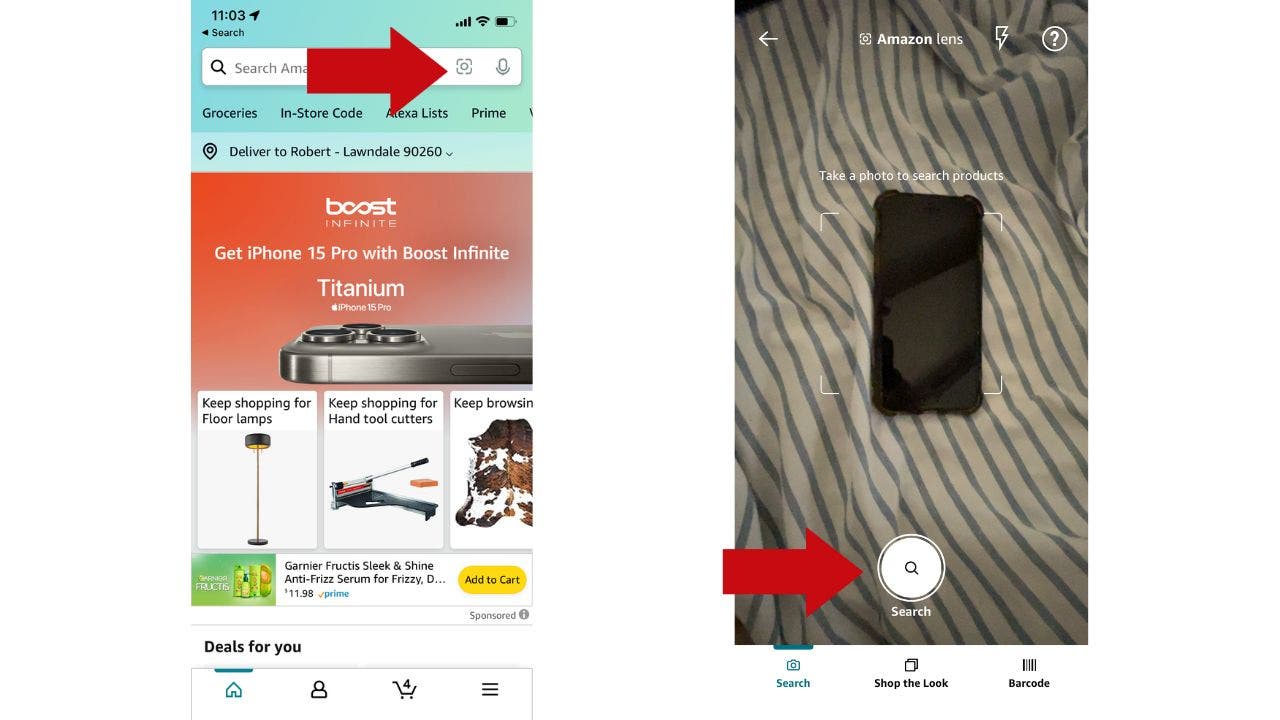
Online shopping and e-commerce have revolutionized the way we shop and live. They have transformed the landscape of many neighborhoods, both big and small, leaving many malls empty and abandoned. Yet, online shopping is not all doom and gloom.
It has also brought us many benefits and conveniences. However, sometimes shopping online can feel like a puzzle. With so many products and choices, finding what you want can be a challenge.
That’s why Amazon has introduced some new features to help you search and discover the best items for you. These features are designed to make your online shopping experience easier and more enjoyable.
CLICK TO GET KURT’S FREE CYBERGUY NEWSLETTER WITH SECURITY ALERTS, QUICK TIPS, TECH REVIEWS AND EASY HOW-TO’S TO MAKE YOU SMARTER
1. Snap, search and find
Imagine needing a specific home appliance part, yet the exact name escapes your mind. Trust me, it happens at the worst times. Well, one of Amazon’s new shopping features called Amazon Lens allows a picture to be snapped and uploaded for a search.
- Simply open the Amazon app
- Tap the camera icon in the Amazon search bar
- Capture a photo of the elusive piece
- Tap Search and let the visual search algorithms do their work
- After snapping the picture and viewing the search bar with the uploaded image, there’s a new option to add additional text. This “+ Add text” new feature allows typing in any extra information or descriptors that can help refine the search results. It’s an add-on to help narrow down the hunt for the right product. However, its effectiveness will rely on the clarity of the image and the efficiency of the algorithms in action.
HOW TO POLICE HOLLYWOOD FROM SWIPING ORIGINAL CREATIVE WORK WITH AI
You can search for items on Amazon by simply snapping a picture of the exact item you are looking for. (CyberGuy.com)
MORE: NOT SO FAST – DON’T CLICK THAT FAKE AMAZON OR MICROSOFT AD
2. Augmented reality shopping
When buying items for the home, visualizing them in the actual space ahead of spending money can make a world of difference. Amazon’s “View in Your Room” feature uses augmented reality to help see how a product will look and fit in a specific space, aiding in making more informed decisions.
Not every product has this feature enabled. You can check if a product has this feature by looking for the “View in Your Room” button under the product image in the Amazon shopping app or on the desktop web browser. If you don’t see this button, it means that the product does not support this feature. Here’s how to embark on this virtual venture:
- Go to the search bar in the Amazon app and conduct a search for the item you are looking to purchase
- Then click on the item or product
- Next, click the “View in Your Room” button under the product image on the mobile product detail page
- Then you will be asked to point your phone at the floor
- Move your phone around and then click tap to place.
MEET THE WORLD’S FIRST AI MASSAGE ROBOT
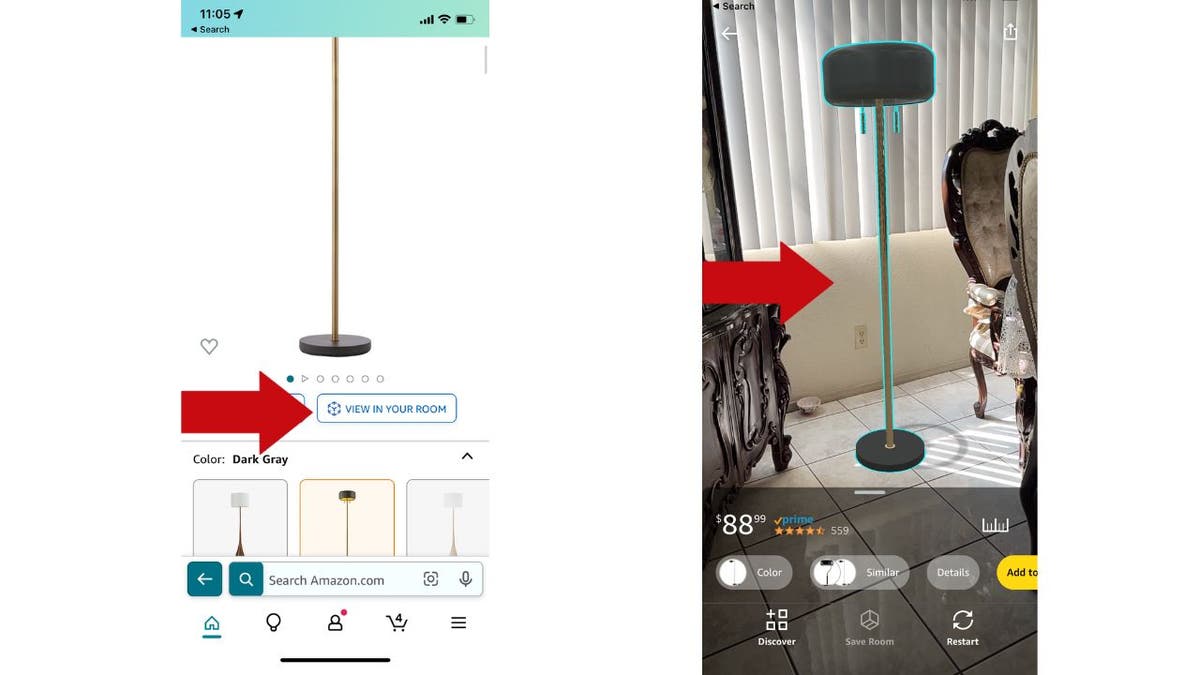
Amazon has a “View in Your Room” feature that allows you to shop with augmented reality. (CyberGuy.com)
MORE: 4 TRICKS FOR GETTING AN AMAZON PRIME MEMBERSHIP FOR LESS
It seamlessly places the products in your home through the phone’s screen, offering a glance at how these items will mesh with the existing surroundings. It’s as simple as a click, and the products can be virtually moved from one surface to another for a comprehensive evaluation. However, the visual representation might not always be perfect, and users should be prepared for potential discrepancies
3. Riding the waves of sales trends
Amazon is now displaying Sales Trend data on search results and product detail pages, indicating a product’s recent popularity. It shows a broad estimate of the number of customers who recently purchased a product on Amazon. It is updated at least daily and does not include returns and cancellations. While, this information can be helpful, you should remember that popularity does not always equate to quality or suitability for individual needs.
Note that this feature is not available on all products. At the time of publishing, Sales Trend data is only displayed for certain categories such as health and personal care, home and sports. It also requires a minimum number of customers to have recently purchased a particular product, usually at least 50 in the last month. Therefore, some products may not show sales trend data, even if they belong to the eligible categories.
5 TECH SHORTCUTS THAT ARE SURE TO MAKE YOUR LIFE EASIER
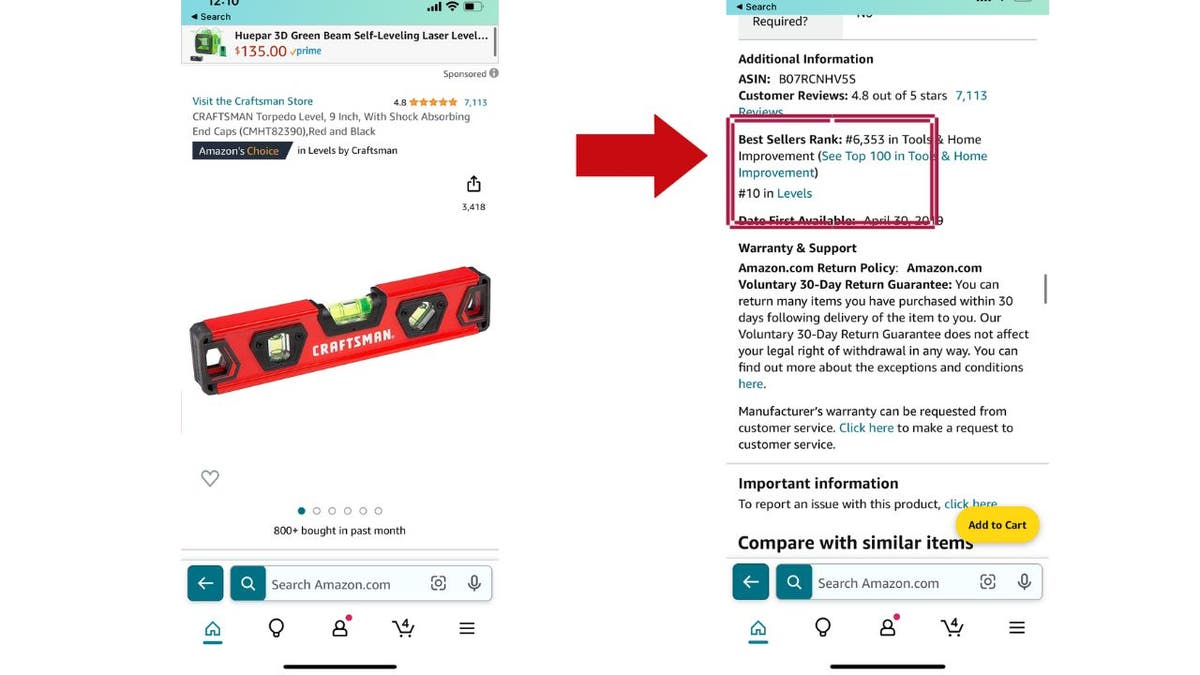
Amazon has “Sales Trends” which allows you to see a product’s popularity. (CyberGuy.com)
GET MORE OF MY MONEY-SAVING TECH TIPS & EASY VIDEO TUTORIALS WITH THE FREE CYBERGUY NEWSLETTER – CLICK HERE
4. Shortcut shopping with ‘Find-on-Amazon’
If you ever come across a product online and want to find it on Amazon? The Find-on-Amazon feature has got that covered. For a shortcut search experience, when a product is spotted anywhere online, simply tap the “Share” button, choose the Amazon Shopping app, and click “Find products on Amazon.”
CREEPY CHATGPT ‘VOICE CONVERSATION’ MIMICS A HUMAN WITH A CONVINCING PERSONALITY AND KNOWS ALMOST EVERYTHING

You can search for products from other sites on Amazon by tapping the “Share” button. (CyberGuy.com)
This handy tool will take you straight to the Amazon Shopping app, displaying similar products available on Amazon making it easier to find, compare and decide. It’s a convenient feature, minimizing the hassle and time spent searching for products. However, it’s worth noting that finding an exact match might not always be guaranteed, as it depends on the product’s availability and listing on Amazon. Also, remember to always use price comparison tools to make sure you are getting the best deal.
5. Regret-free reordering
For frequently purchased items, Amazon is aiming to make the reordering process more straightforward. The platform will highlight previously purchased items in search results, making them easier to find and reorder. It’s a useful feature as long as the tracking and history functions work seamlessly. Keep an eye on Amazon’s fluid pricing when reordering to make sure the cost did not unnecessarily get jacked up.
OOPS! YOU CLICKED ON A SPAM EMAIL AND ADDED YOUR INFO TO WHAT LOOKED LIKE A LEGIT SITE
Kurt’s key takeaways
Amazon, the world’s big tech retail giant, wants our money. With more convenient shopping features they are likely to win over more from our wallets by making it easier to shop. Don’t let convenience overshadow good prices. Keep Amazon on their toes by price comparing before you hit the “Place Order” button.
Pro tip: Most items are returnable within 30 days outside of holiday periods. Set price trackers in case the amount goes down after your purchase. A picture for a search? A virtual view of products in the living room? It definitely makes the online shopping process much easier. Sure, there might be a few kinks to iron out.
Got a better way to shop to save money and find a needle in the haystack of online retailers? Let us know by writing us at Cyberguy.com/Contact.
For more of my tech tips and security alerts, subscribe to my free CyberGuy Report Newsletter by heading to Cyberguy.com/Newsletter.
Answers to the most asked CyberGuy questions:
Copyright 2023 CyberGuy.com. All rights reserved.

Technology
Roblox wants to better reward creators for bringing players back

Roblox is introducing two new systems that are designed to further encourage creators to bring players onto the social games platform on a regular basis. The systems, part of what Roblox is calling Creator Rewards, will roll out beginning July 24th.
One is the Daily Engagement Reward program, which gives Roblox creators 5 Robux for an “active spender” on the platform who spends at least 10 minutes in their experience in one day. 5 Robux isn’t a lot on its own — depending on where you buy Robux, that can translate to about five cents — but if an experience brings back thousands or millions of people every day, that could add up quickly. Roblox may also change the payout in the future, it says in a blog post.
To be eligible for the reward, a creator’s experience must also be one of the first three experiences an active spender (which the platform defines as a user who has spent at least $9.99 in the last 60 days) launches each day.
The choice to offer these payouts after the first three experiences isn’t an exact science, Roblox CPO Manuel Bronstein tells The Verge. It’s more that those first three experiences are why you may come to the platform in a given day, he says, while you might visit experiences after those first three because you found something new through recommendations or because of a friend’s suggestion.
Bronstein doesn’t think creators will change their experiences to optimize just for that 10-minute threshold. “Continue to build a great product, continue to build a great game, continue to build a great experience, and you will benefit from this reward,” he says.
He also points out that these engagement-based rewards aren’t the sole mechanism for Roblox creators to make money. The “vast” majority of transactions for Roblox developers come from transactions that they generate on the platform, according to Bronstein, and creators can also monetize with things like ads, subscriptions, and even selling physical goods.
The second program Roblox is adding is the Audience Expansion Reward, which pays creators a revenue share of purchases from Roblox users who join or return to the platform because of them. Roblox will apply the credit if a player joins the platform through a creator’s link or if a player searches for a creator’s experience on Roblox by name and plays for at least 10 minutes. This new system will eventually take over for Roblox’s current Creator Affiliate program. This program will offer a 35 percent revenue share to creators on up to the first $100 those new or returning users spend in their first two months on Roblox.
Technology
Your health data is being sold without your consent
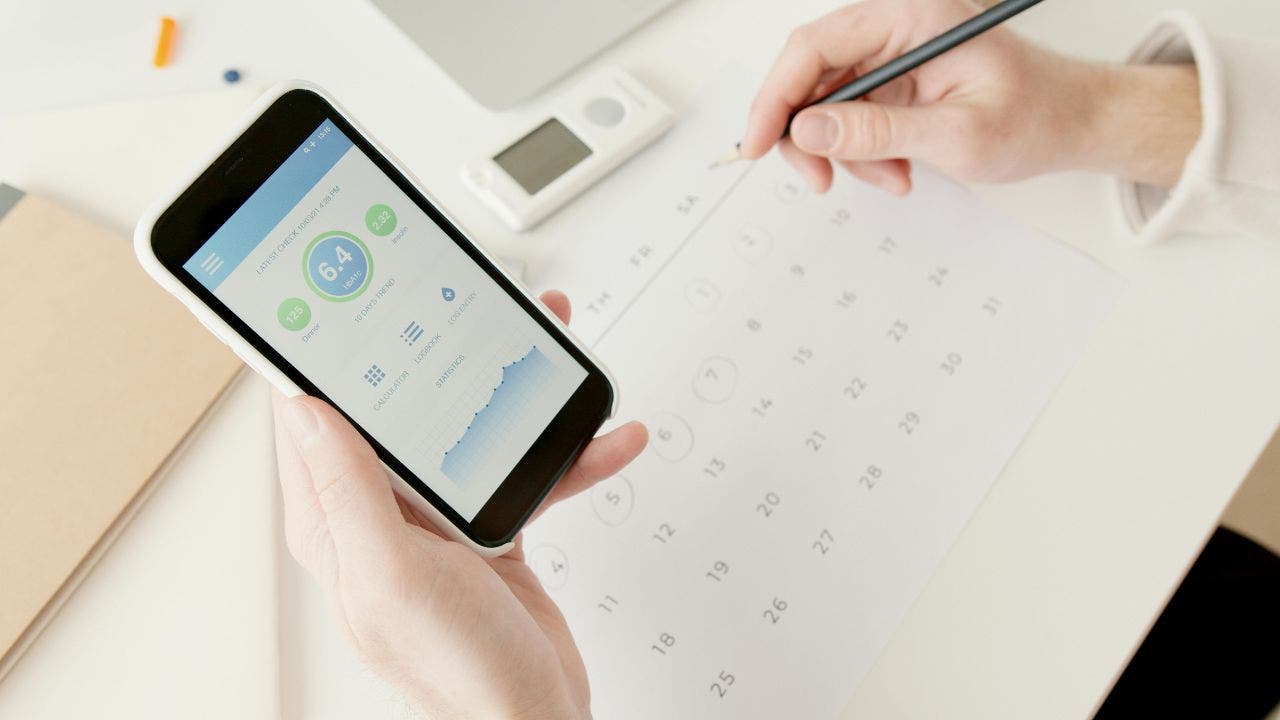
NEWYou can now listen to Fox News articles!
Your health information might feel private and secure with your doctor, but the reality is far more complicated. Data brokers collect a wide range of sensitive health data, from diagnoses and prescription details to personal identifiers, and sell this data to marketers, insurers, and other third parties. These buyers use the information to target ads, adjust insurance premiums, or even for purposes you might not expect. Understanding who holds your health data and how it’s used and shared is crucial to protecting your privacy.
Sign up for my FREE CyberGuy Report
Get my best tech tips, urgent security alerts, and exclusive deals delivered straight to your inbox. Plus, you’ll get instant access to my Ultimate Scam Survival Guide — free when you join.
A woman viewing her health app. (Kurt “CyberGuy” Knutsson)
Massive health data breaches are fueling the data broker industry
You might think your health data is safe with your doctor. But what if I told you total strangers might know when you last Googled “early signs of dementia” or filled a prescription for anxiety meds, and they’re selling that to whoever is willing to pay for it? A recent data breach at Yale New Haven Health, Connecticut’s largest healthcare system, exposed sensitive information on 5.5 million people. And it’s not an isolated incident; new research shows that since 2020, approximately 94.5 million Americans may have had their Social Security numbers stolen during health data breaches. The scary part is that data brokers collect and sell the names, addresses, and prescribed medications of patients diagnosed with mental health disorders to marketers on a large scale. How much is your medical information worth? Data brokers can sell it for as little as $0.06 per record. Let’s break down what these data brokers know, who they’re selling it to, and why it matters for you, your family, and especially vulnerable groups like seniors.
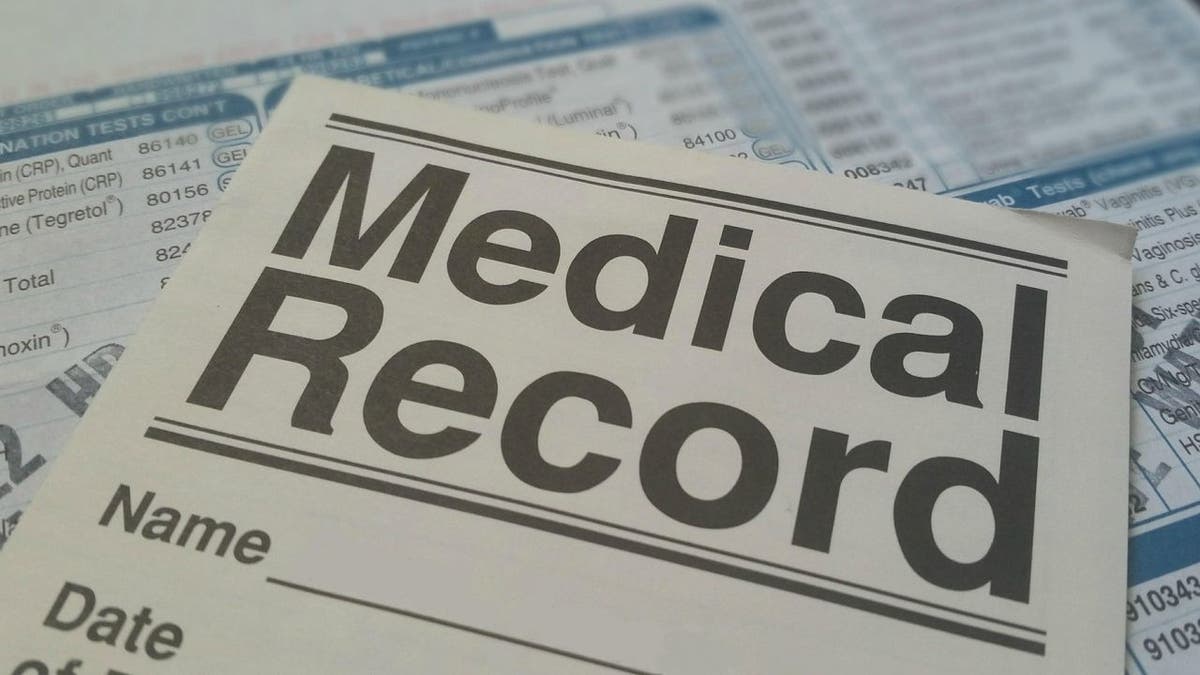
Illustration of a medical record. (Kurt “CyberGuy” Knutsson)
CUSTOM DATA REMOVAL: WHY IT MATTERS FOR PERSONAL INFO ONLINE
What types of health information are data brokers selling?
There’s a difference between protected health information, the kind your doctor and health insurer have to keep private, thanks to HIPAA, and the health-adjacent data you leave behind everywhere else.
Data brokers typically don’t have access to your official medical records. But they’re not regulated under HIPAA or any other laws, so they can legally collect:
- Fitness app data: Step counts, heart rate, calories burned.
- Symptom-related Google searches: Even “early signs of dementia” or “knee pain at night.”
- Pharmacy purchases: Both prescriptions and over-the-counter medications.
- Wellness quizzes and online forms: Those “What’s your biological age?” surveys aren’t just for fun.
- Social media posts and likes: Public posts about health topics, comments in support groups.
- Location data: Visits to clinics, pharmacies, or addiction recovery centers.
And it doesn’t stop there. Non-health data, like where you shop or the ads you click, gets combined to build a disturbingly accurate health profile.
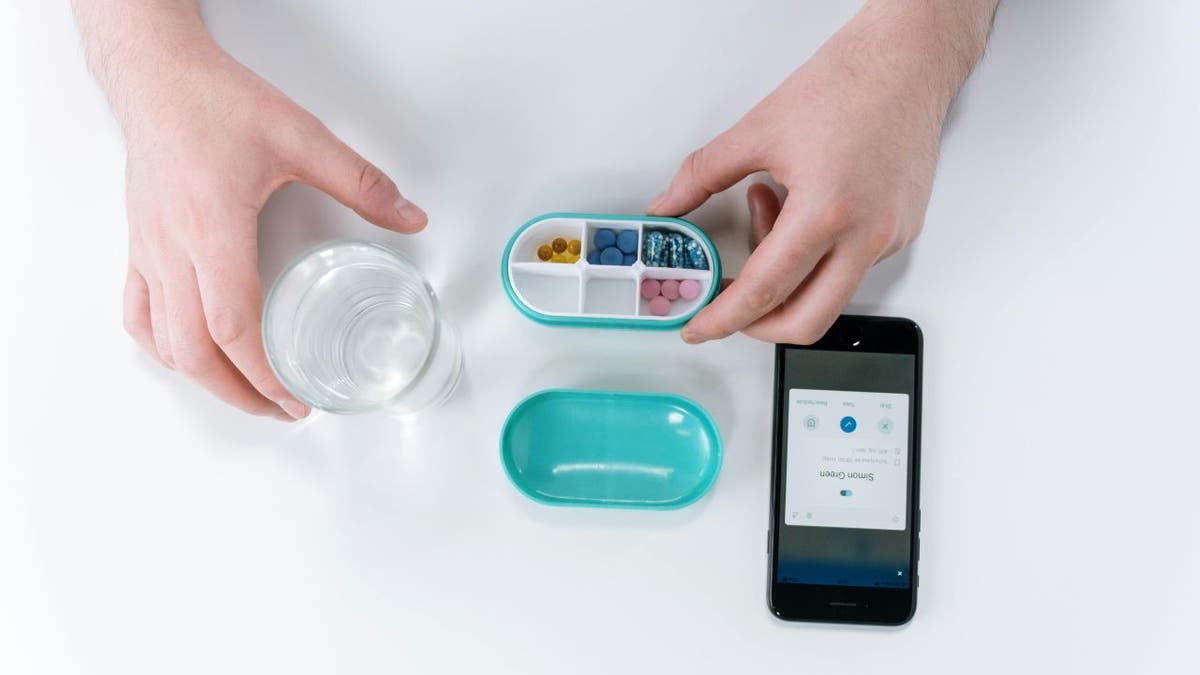
A woman using a health app to keep track of pills (Kurt “CyberGuy” Knutsson)
WHAT HACKERS CAN LEARN ABOUT YOU FROM A DATA BROKER FILE
Why selling your health data is more dangerous than you think
This isn’t harmless marketing data. When health information lands in the wrong hands, it creates real risks:
- Higher insurance premiums or limited coverage based on inferred health risks.
- Scams targeting seniors and vulnerable groups use lists of people flagged for dementia, heart disease, or other conditions.
- Privacy violations, exposing sensitive details like mental health struggles or fertility treatments.
- Discrimination in hiring, housing, or services based on health-related data.
- Resale to unknown third parties, making it impossible to control once it’s out there.
And it’s not just marketers. A recent government-backed autism study led by Robert F. Kennedy Jr. sparked outrage after it was revealed that private health data was collected from federal and commercial databases without clear safeguards. Security experts warn that this kind of large-scale data collection runs the risk of exposing deeply personal information with little oversight.

A healthcare professional looking at health data on a tablet. (Kurt “CyberGuy” Knutsson)
THINK YOU CAN DELETE YOUR OWN DATA? WHY IT’S HARDER THAN YOU THINK
8 ways to protect your health data from data brokers
Worried about who has access to your health data? While you can’t control every breach or broker, you can take steps to limit what’s collected, shared, and sold. Here’s how to take back control of your digital health footprint-starting today.
1) Use a personal data removal service: Data brokers collect and sell sensitive health information, including diagnoses, prescriptions, and personal identifiers, to marketers, insurers, and other third parties. This means details about your pharmacy purchases, symptom-related searches, and more could be circulating without your knowledge. A personal data removal service can help you take back control. This is one of the most effective ways to safeguard your privacy and protect yourself and your family from risks like scams, higher insurance premiums, and discrimination.
While no service can guarantee the complete removal of your data from the internet, a data removal service is really a smart choice. They aren’t cheap – and neither is your privacy. These services do all the work for you by actively monitoring and systematically erasing your personal information from hundreds of websites. It’s what gives me peace of mind and has proven to be the most effective way to erase your personal data from the internet. By limiting the information available, you reduce the risk of scammers cross-referencing data from breaches with information they might find on the dark web, making it harder for them to target you. Check out my top picks for data removal services here.
Get a free scan to find out if your personal information is already out on the web
2) Audit your apps and privacy settings: Health and fitness apps collect more than you realize. Delete the ones you don’t trust and check permissions on the rest
3) Be wary of free health quizzes and symptom checkers: If a site asks for personal details in exchange for “insights,” assume it’s monetizing your answers. Consult your doctor, not a clickbait quiz.
4) Limit data sharing beyond healthcare providers: Only provide necessary information when signing up for health-related services or apps. Be wary of sharing health details on social media or in public forums, as these can be scraped by data brokers.
5) Request data minimization from providers: Ask your healthcare providers to collect and store only the minimum amount of personal information necessary for your care, reducing the risk if their systems are compromised.
6) Use strong antivirus software: Strong antivirus software acts as a shield, protecting your devices from malware, ransomware, and other cyber threats that could compromise your personal health data. Choose a reputable solution that offers real-time threat detection, regular updates, and robust protection for all your devices. This protection can also alert you to phishing emails and ransomware scams, keeping your personal information and digital assets safe. Keeping your antivirus up to date is crucial for blocking malicious links and downloads before they can do harm. Get my picks for the best 2025 antivirus protection winners for your Windows, Mac, Android & iOS devices.
7) Regularly update your software: Cyber threats targeting health data are constantly evolving, and outdated software can leave your devices vulnerable to attacks that expose your sensitive information. Keeping your operating system, apps, antivirus, and security tools up to date ensures you have the latest protections against malware, ransomware, and other exploits that data brokers or hackers might use to access your health information. Regular updates patch security holes before they can be exploited, helping to prevent breaches like those that have exposed millions of Americans’ health details in recent years.
8) Use strong and unique passwords: Your health data is often protected by passwords on apps, portals, and devices. Using strong, unique passwords for each account reduces the risk that a single breach could give someone access to multiple sources of your personal information. Avoid common or reused passwords, and consider using a password manager to generate and store complex passwords securely. This step is crucial because once your login credentials are compromised, data brokers or cybercriminals can gather and sell your health-related data, leading to privacy violations, discrimination, or targeted scams. Consider using a password manager to generate and store complex passwords. Get more details about my best expert-reviewed Password Managers of 2025 here.
Kurt’s key takeaways
Your health should be personal, but in today’s digital world, that privacy is constantly under threat. Even if you’re cautious, your health-related information can be collected, analyzed, and sold without your clear consent. The good news is that you can take real steps to reduce your exposure and protect what matters. This isn’t about fear; it’s about staying informed and taking control of your digital footprint.
Should lawmakers and tech companies be doing more to protect our health data, or is it all on us to safeguard our own privacy? Let us know by writing to us at Cyberguy.com/Contact.
For more of my tech tips & security alerts, subscribe to my free CyberGuy Report Newsletter by heading to Cyberguy.com/Newsletter.
Ask Kurt a question or let us know what stories you’d like us to cover.
Follow Kurt on his social channels
Answers to the most asked CyberGuy questions:
New from Kurt:
Copyright 2025 CyberGuy.com. All rights reserved.
Technology
Samsung confirms Unpacked for early July

Samsung’s summer Unpacked is officially on, starting at 10AM ET on Wednesday, July 9th. The invitation features a jazzy little bop and the words “Ultra Unfolds,” so I think it’s safe to assume we’re getting that foldable Ultra phone the company previously hinted at.
The invitation seems to suggest a thinner device, or at least that’s how I’m reading it. That would line up with some of the rumors, and super-thin foldables has certainly been a trend so far this year. I’ve wedged plenty of chunky foldables into the side pocket of my yoga pants, so I for one would welcome this development.
Per usual, Samsung is offering a little incentive to reserve a device for pre-order ahead of the big reveal: $50 in credit to use at Samsung.com. That’ll cover a chunk of the cost of a case for a foldable phone, which run between $85 and $100 for the Galaxy Z Fold 6 on Samsung’s website right now. If the Ultra comes with an Ultra price tag, it might be worth shelling out a little more to protect it from the wear and tear of daily use. Just a little free advice.
-

 Arizona6 days ago
Arizona6 days agoSuspect in Arizona Rangers' death killed by Missouri troopers
-

 News1 week ago
News1 week agoAt Least 4 Dead and 4 Missing in West Virginia Flash Flooding
-

 News1 week ago
News1 week agoOakland County sheriff urging vigilance after shootings of 2 Minnesota lawmakers
-

 Culture1 week ago
Culture1 week agoBook Review: “The Möbius Book, by Catherine Lacey
-

 Technology1 week ago
Technology1 week agoTanks, guns and face-painting
-

 News1 week ago
News1 week agoVideo: Trump's Military Parade Met With Nationwide Protests
-

 World1 week ago
World1 week agoAt least 100 people killed in gunmen attack in Nigeria: Rights group
-

 Business4 days ago
Business4 days agoDriverless disruption: Tech titans gird for robotaxi wars with new factory and territories














